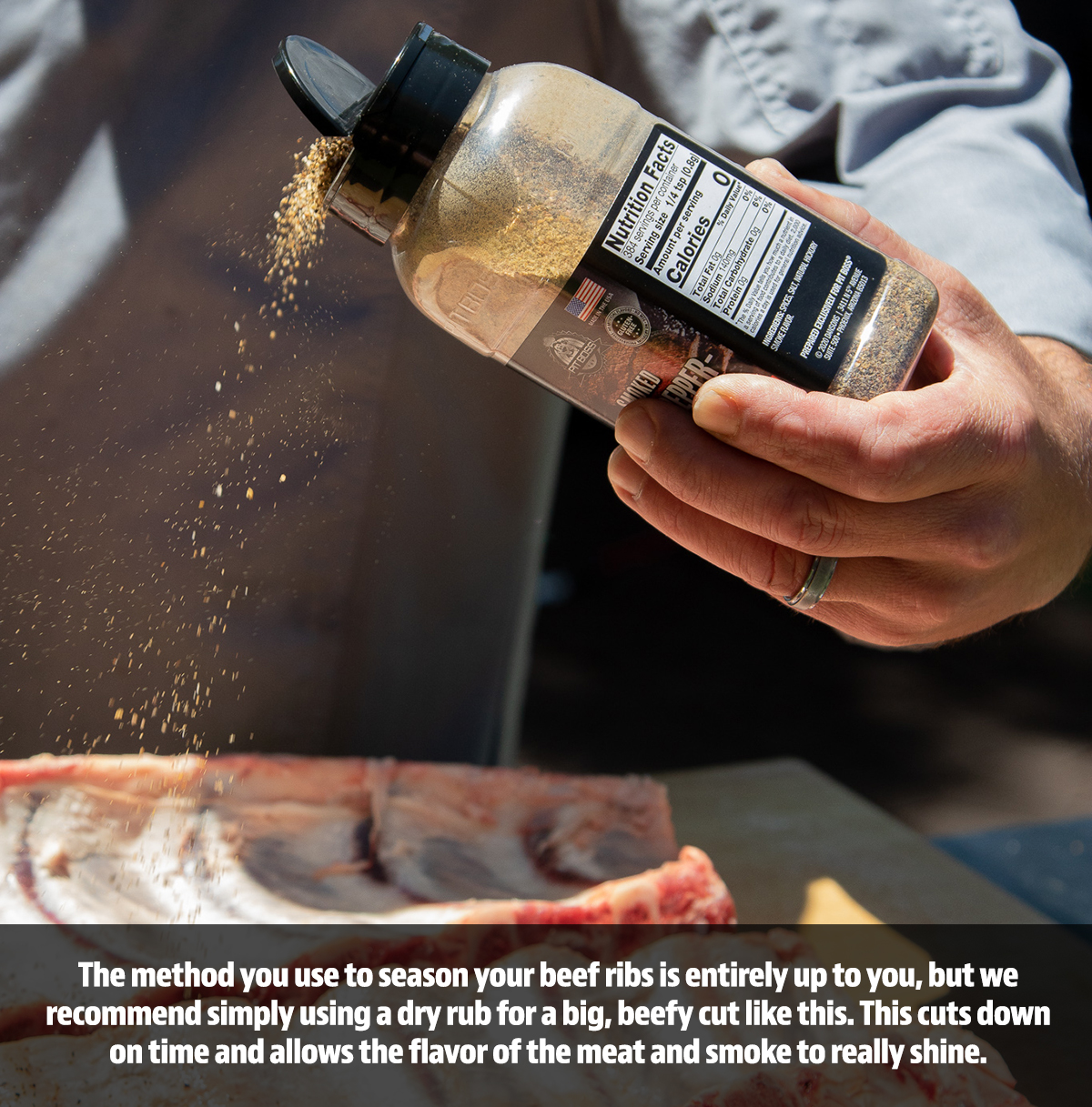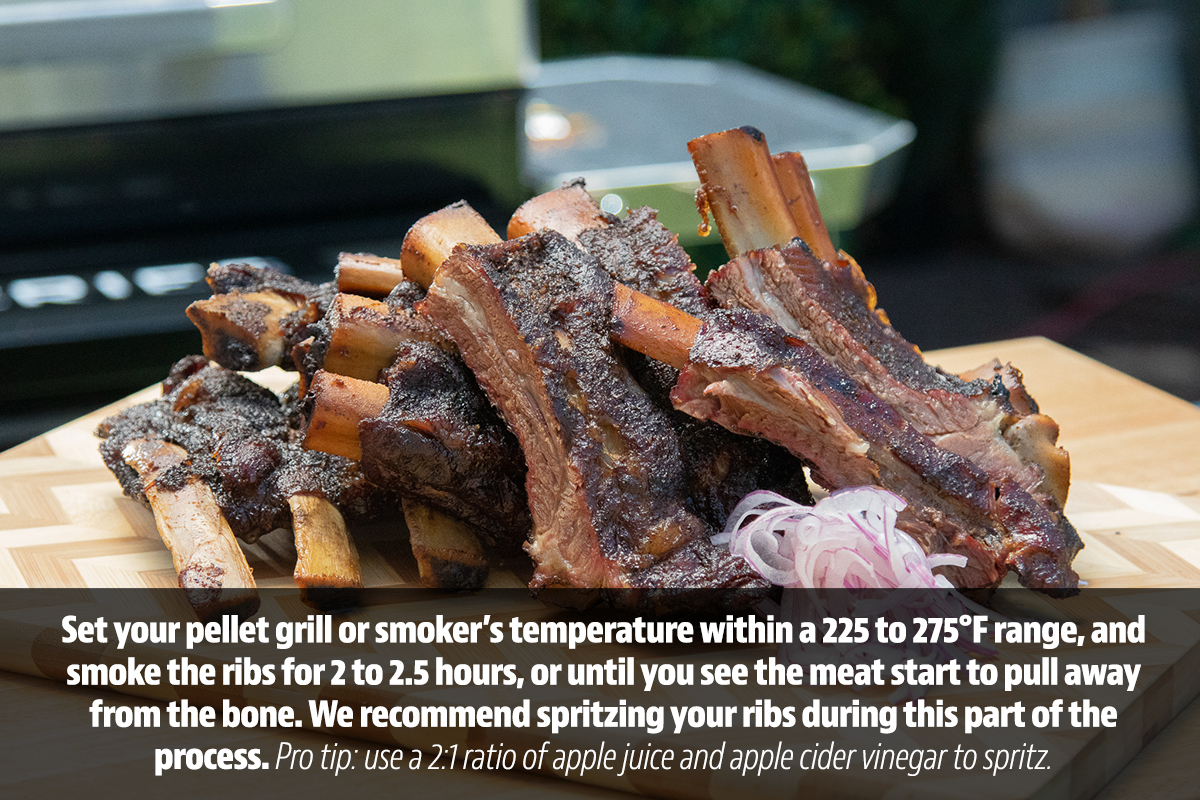
The Best Smoked Beef Ribs
If you’re looking to get huge flavor in huge ribs, you’ve come to the right place. Follow along with our guide to making the best smoked beef ribs for delicious smoky flavor packed into every bite.
How to prep beef ribs
Once you’ve made the trip to the grocery store and snagged the freshest raw ribs available, it’s time to start the prep work.
First, you should remove the membrane. One of the easiest ways to do this is by lifting the edge of the membrane a bit with a paring knife. Then, using a paper towel, grip the edge of the membrane and peel it off.
Some are easier to remove than others, but practice makes perfect. After you’ve removed the membrane, if you’re using untrimmed spareribs, you’ll want to trim off the skirt and breastbone.
How to season beef ribs
The method you use to season your beef ribs is entirely up to you, but we recommend simply using a dry rub for a big, beefy cut like this. This cuts down on time and allows the flavor of the meat and smoke to really shine.
We recommend our Pit Boss Sweet Rib Rub or Sweet Heat Rub for the ultimate flavor.
When fueling up your pellet grill or smoker to smoke beef ribs, we recommend Pit Boss Apple Blend Hardwood Pellets or Pit Boss Competition Blend Hardwood Pellets for the best smoky flavor to compliment this meat cut.
How to smoke beef ribs on a pellet grill or smoker
Since Pit Boss pellet grills generate heat from the bottom, it’s best to place your beef ribs on an upper grate until it’s time to wrap.
Set your pellet grill or smoker’s temperature within a 225 to 275°F range, and smoke the ribs for 2 to 2.5 hours, or until you see the meat start to pull away from the bone.
We recommend spritzing your ribs during this part of the process. Pro tip: use a 2:1 ratio of apple juice and apple cider vinegar to spritz.
Is foil or butcher paper better for wrapping beef ribs?
Your next decision is key: what do you wrap your beef ribs with? Typically, this debate involves two options: aluminum foil or butcher paper.
There are two main benefits of using foil: heat retention and ease of use. Foil traps heat in the meat exceptionally well, speeding up the cooking process. Using foil is also convenient, as just about everyone has a roll of aluminum foil stashed somewhere in their kitchen.
Alternatively, some use butcher paper to wrap their beef ribs. Butcher paper is more porous than foil, which allows additional smoke in and some moisture to leak out. The result is a smokier flavor and a crunchier bark.
So, it really comes down to personal preference. Whichever you choose, we recommend spritzing your wrap and basting your ribs with whole butter before wrapping.
Then, place your ribs meat side down in the smoker. Maintain your temperature and allow ribs to cook for another 1.5 to 2 hours. When it’s time to pull your ribs from the smoker, allow them to rest for 30 to 45 minutes. After unwrapping, glaze them with your favorite sauce and place them back in the smoker for 20 to 30 minutes.


